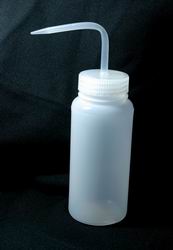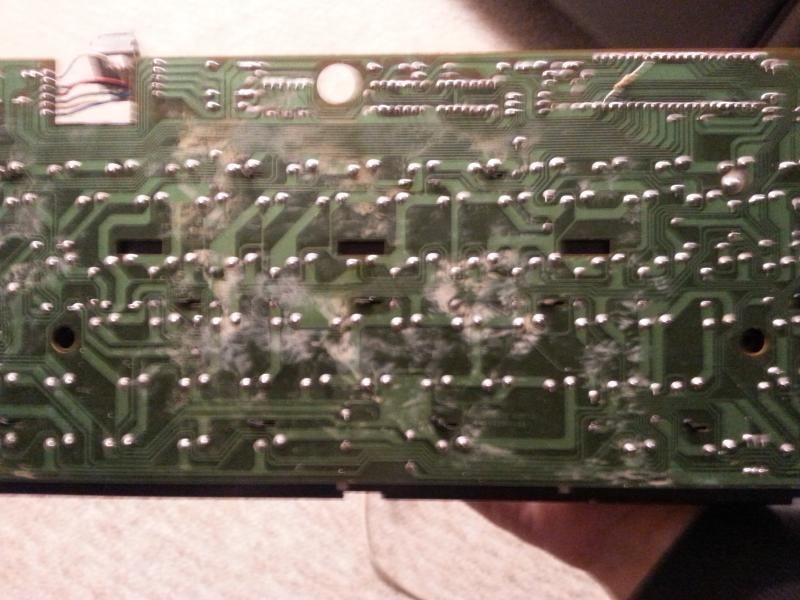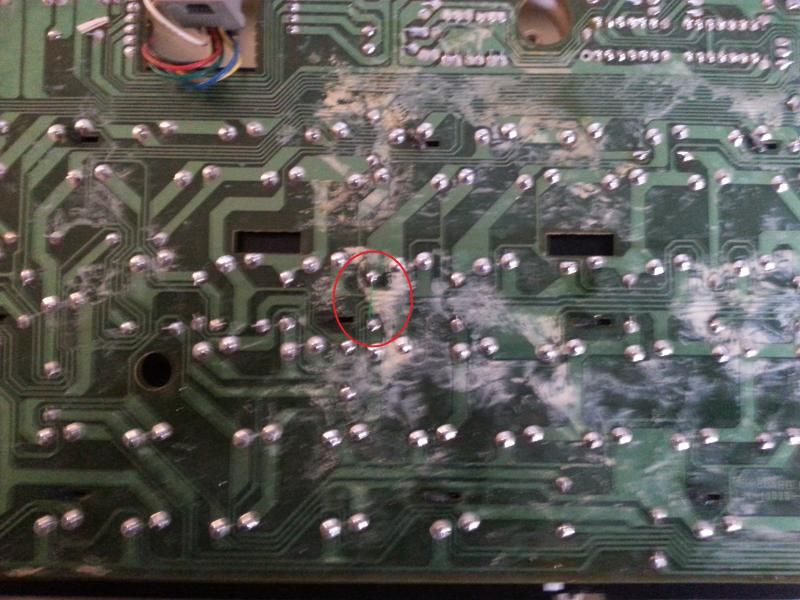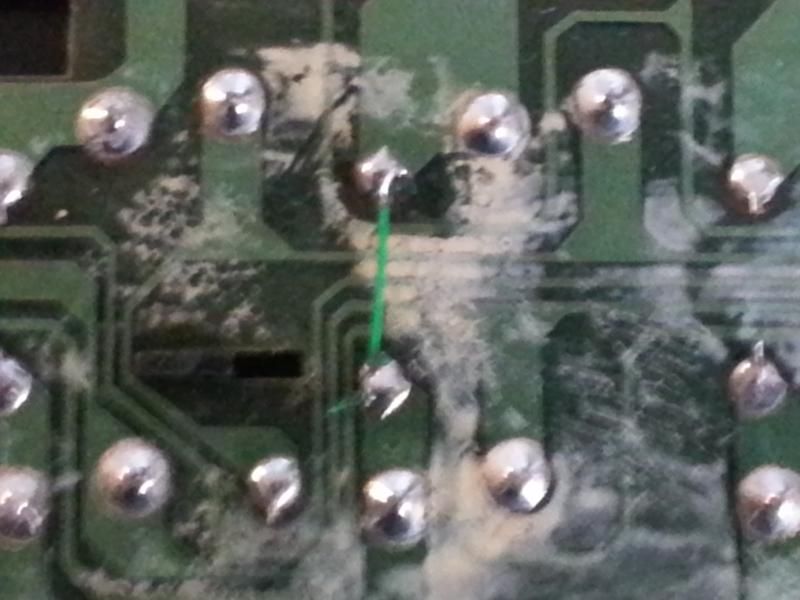That looks like mold to me. Use isopropyl alcohol and distilled water, and watch out for capacitors. Read on below...
High purity isopropyl alcohol (aka isopropanol, IPA) and (if you can find it) distilled and/or deionized water are the way to go for electronic cleaning. Do put these into a little squirt bottle for a thorough cleaning, such as:

- squirtware.jpg (7.53 KiB) Viewed 2464 times
IPA is a mild organic solvent that won't do much against solder mask (green/blue/purple/red covering). It will penetrate into a raw (tan) fiberglass PCB some but it will evaporate. It does a great job of dissolving, for example, curry, or musty smells.
Do *not* use tap, well, etc. water. With those you run the risk of chlorine doing damage, and with calcium chloride and other dissolved minerals staying behind. Around here distilled water is 1 USD/gallon and often found in the baby food aisle at the grocery store. 91% IPA is about 2.50 USD/quart or liter and with the bandages.
Try to use lint free cloths for cleaning. A microfiber cloth, a sponge, and KimWipes are a better option than paper towels or cotton swabs.
Apart from moisture sensors (I've never seen one on a keyboard) the only water sensitive components are electrolytic capacitors. You risk washing away the electrolyte which is a Bad Thing when you power on the board. These are the components that usually fail first on most consumer electronics. They look like this, with either one lead at each end, or two on one end:

- electrolytic-capacitor.jpg (24.08 KiB) Viewed 2464 times
Transistors, diodes, ceramic resistors and capacitors, ICs, and most other components are extremely well sealed.
Your best bet is to desolder the capacitors, give the board a bath, and replace them. Ideally use new replacements if you have them with the same ratings.
Hope this helps (maybe a nice review if you already know much of this).




